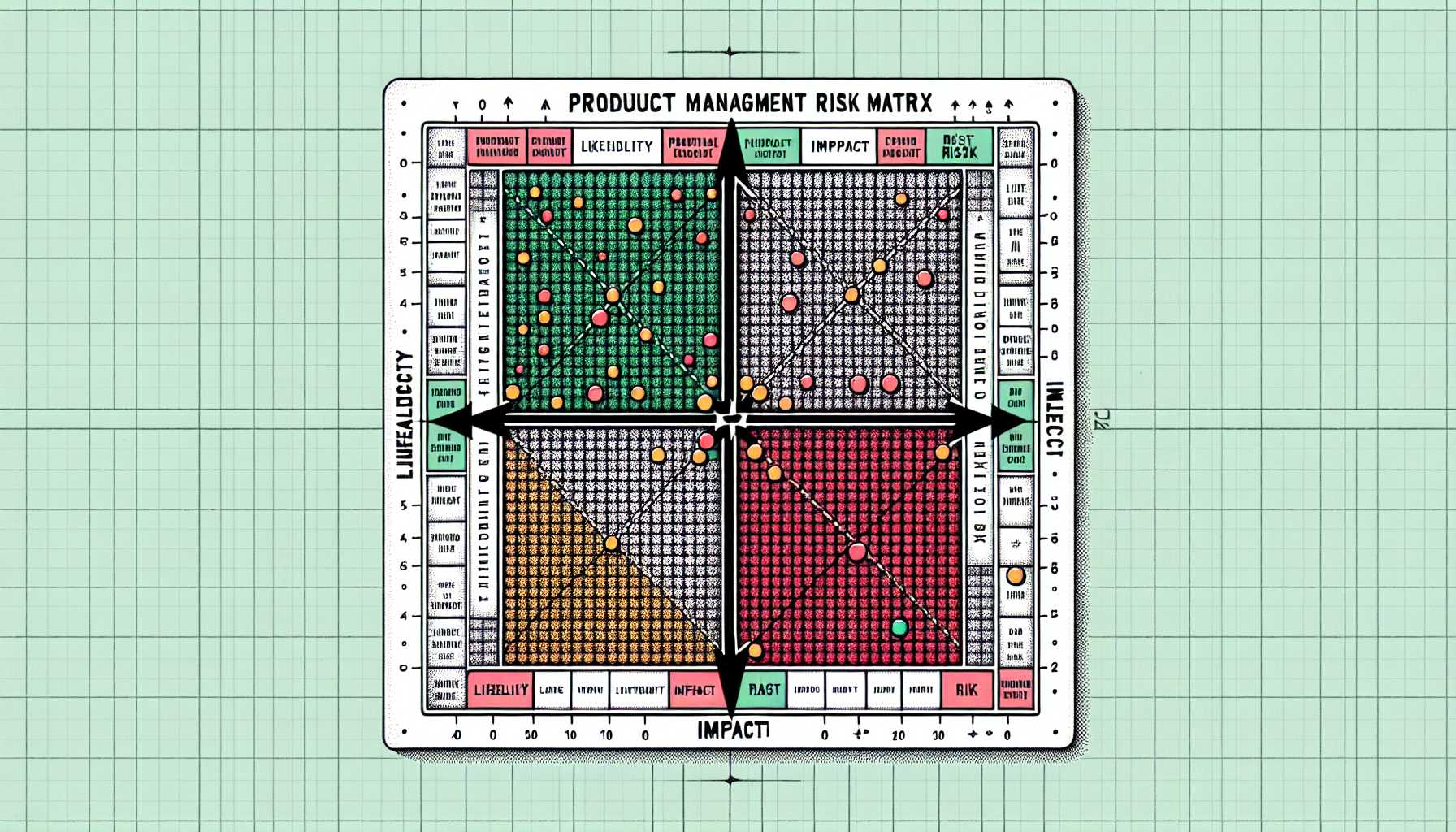As a seasoned product manager, you’re no stranger to the volatile landscape of tech industry where a single oversight can pivot the course of your product from groundbreaking to obsolete. From my years of experience, I’ve come to recognize that risk is not a foe to be vanquished, but a companion to be managed carefully. In this post, I will share the frameworks and personal learnings that have helped me identify and mitigate product risks without stifling innovation.
Understanding Product Risks
The first step in managing product risk is to understand what risks are inherent to the product development process. Risks can range from technical debt, market misalignment, compliance issues, to unvalidated assumptions. Early identification is imperative. I leverage the Risk Management Matrix, a tool dividing risks into quadrants based on their likelihood and impact, to guide prioritization. For instance, in one of my past projects, an API dependency was identified as a high-impact, high-likelihood risk – warranting immediate attention.
Proactive Risk Mitigation Strategies
To proactively mitigate risks, it’s essential to unify the team around a structured approach. Here are some strategies that have proven successful:
- Foster a risk-aware culture: Encourage open communication about risks. In every team meeting, we dedicated time to discuss potential risks which democratized the risk management process.
- Continuous market validation: Adopt practices such as regular customer interviews or A/B testing. We once pivoted an entire feature set based on emergent user data, which was against initial assumptions but proved beneficial in the long run.
- Build a flexible roadmap: While it’s vital to have a clear direction, rigidity can be detrimental. Allow room for adjustments based on risk assessments. One product I led featured a roadmap that evolved almost quarterly in response to ongoing risk reevaluation.
- Integrate risk management into Agile practices: Incorporate risk assessment into sprint rituals. This approach saved a product I managed from suffering severe technical debt by prioritizing refactoring when the risk became too high.
- Employ robust testing strategies: Ensuring comprehensive test coverage can surface potential failures before they impact customers. A robust CI/CD pipeline helped catch a critical performance bug days before a major release in a project I spearheaded.
Tools and Techniques for Early Risk Identification
Identification tools like Failure Mode and Effects Analysis (FMEA) and premortems have been integral to my product management toolkit. These methodologies require you to envisage potential failures and ponder ‘What could possibly go wrong?’ We once conducted a premortem that led to the discovery of scalability concerns with our initial architecture.
Leveraging Analytics for Risk Management
Data is your best ally in managing product risk. Utilizing predictive analytics can flag usage patterns that indicate potential issues. I can recall leveraging user analytics to uncover UI patterns that caused customer drop-offs, which we were then able to rectify swiftly.
Case Study: Risk Management in Action
To demonstrate these principles in action, let me recount a story from a past project. We were building a SaaS platform with high real-time data processing demands. Using the risk management matrix, we identified potential data throughput limitations as a high-risk area. Counterintuitively, we delayed feature development to focus on a scalable infrastructure first. This calculated move paid off when we smoothly onboarded our first enterprise client, a testament to the value of risk prioritization.
In conclusion, effective product risk management combines a structured approach with adaptability. It’s a constant balance between foresight and flexibility, risk identification and vigorous implementation of mitigation strategies. It’s what has kept the products I’ve managed dynamic and resilient in the face of an ever-changing tech world.
Remember, risk management is less about elimination and more about strategizing for impact. How you anticipate and navigate product risks not only defines the trajectory of your product, but it also sets the tone for your leadership and your team’s approach to problem-solving.

